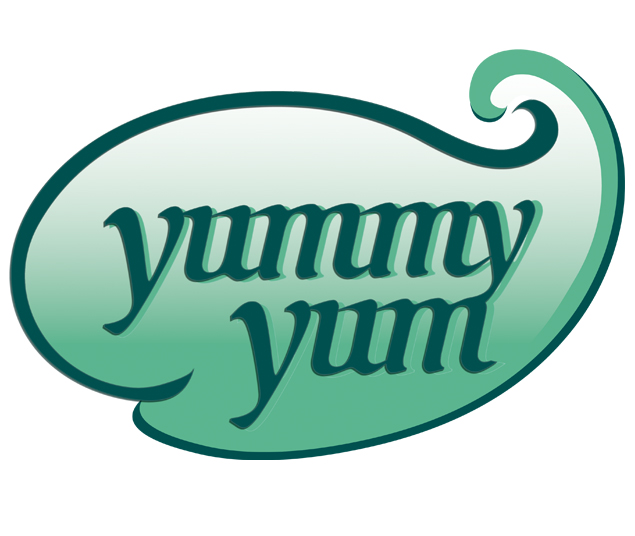Squash Blossoms
No matter how tasteful the delicacy, why would anyone eat a squash blossom? Wouldn't it be better to allow each of those blossoms to grow into a delightfully delicious squash? Perhaps it would be better if, in fact, all squash blossoms became squash. They don't. Mother Nature, with her infinite sense of humor, put both male and female squash blossoms on the same vine, but they're too far apart to make baby squash without a little help. Read on to learn how to tell the difference between the two.
It's all a part of that 'Birds and Bees' story your mother told you and when it comes to squash plants, the emphasis is definitely on the bees. Whether it's the summer varieties such as zucchini squash, crook neck squash, straight yellow squash or winter types like butternut squash, spaghetti squash and acorn squash, all squash have one thing in common. There's a male squash blossom and a female squash blossom, and without at least one of each and a few busy bees, you won't be eating any squash.
Here's how it works. The male flower opens and the bees get busy doing what bees do and while they're doing it, pollen from the male flower sticks to their hairy little legs. The bees then buzz on over to the female flower where a little of the collected pollen falls off and fertilizes the female flower. Time passes and the little base of the female flower grows into a squash. The male flower has done his job and is now pretty much useless. Let's eat him and enjoy!
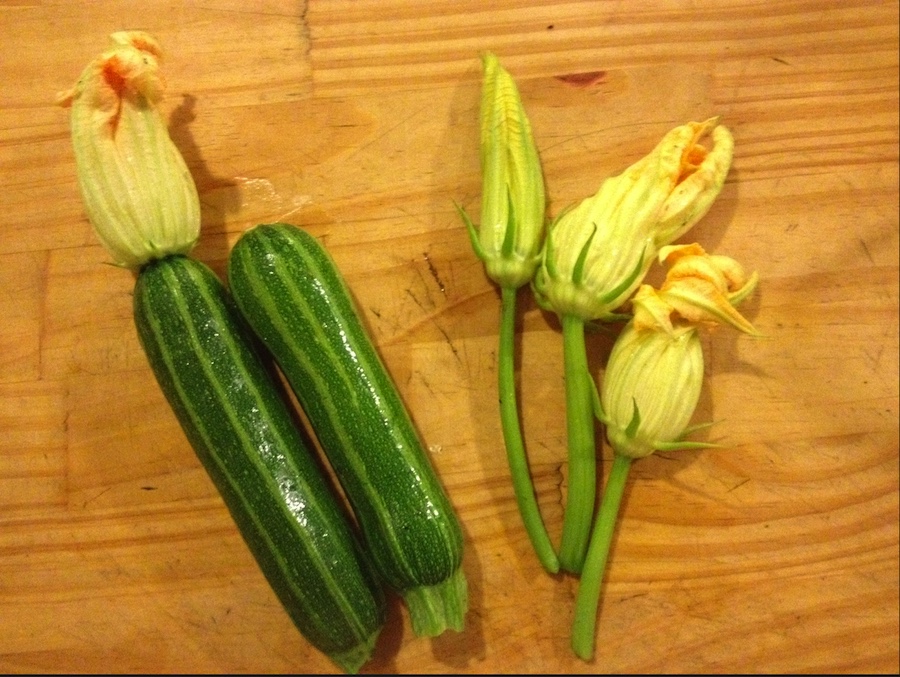
Female on the left... Male on the right
They are flavorful and colorful when used as a garnish on salads. Remove the anthers inside, wash, dry the flowers, and use them whole or chopped. Stuff the blooms with rice, herbs or cheese when cooking with squash flowers. You can also pickle, deep fry, or can squash blossoms. If you cook the flowers, you can freeze them. Whichever method you choose, prepare the blooms as quickly as possible for best flavor and texture.
Harvesting squash flowers is easy and a great way to put the male blooms to use rather than having them simply fall from the plant to waste away.
Prepare. Open and inspect squash blossoms for insects before using them. Pull off and discard the green calyxes surrounding the bottom of the blossom. Clean blossoms by gently swishing them in a bowl of cold water. Shake them dry. Trim or snip out the anthers or style.
Stuff blossoms with soft cheese, cooked and crumbled sausage, then bread and fry or bake.
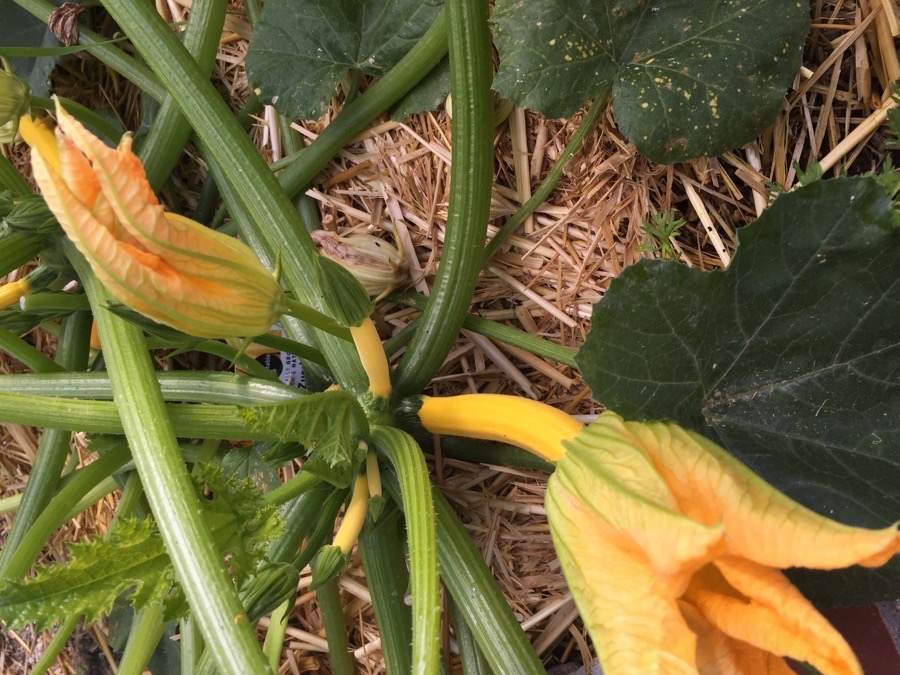
Pictures from this morning (3/22/2015)...
Male on top-left (skinny stem) ... Female on bottom-right
(with fruit stem)
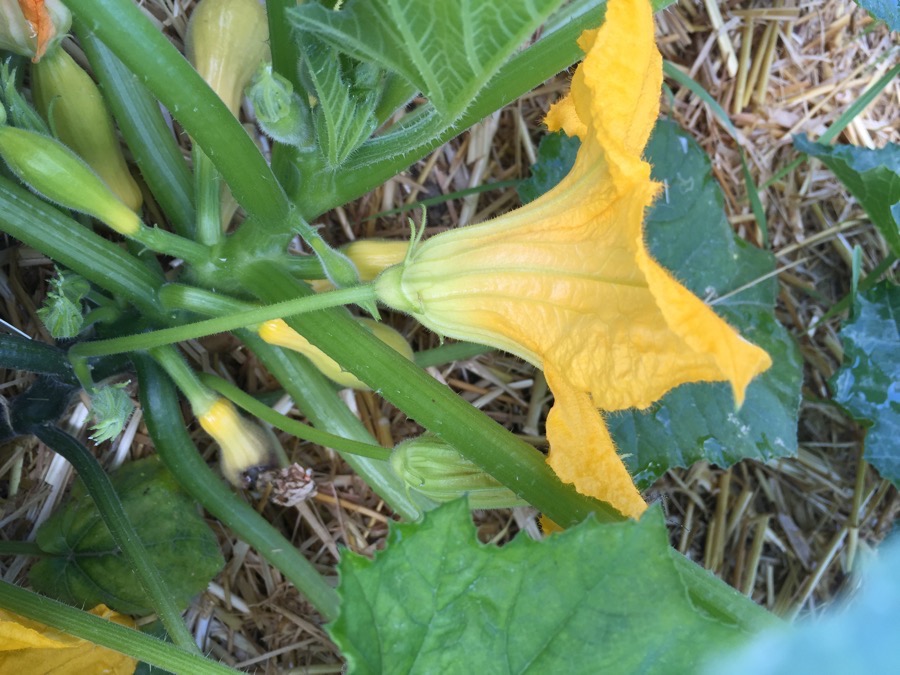
The male is the skinny guy

The plants are growing well and will produce for two months or so!

So... We Tried It!
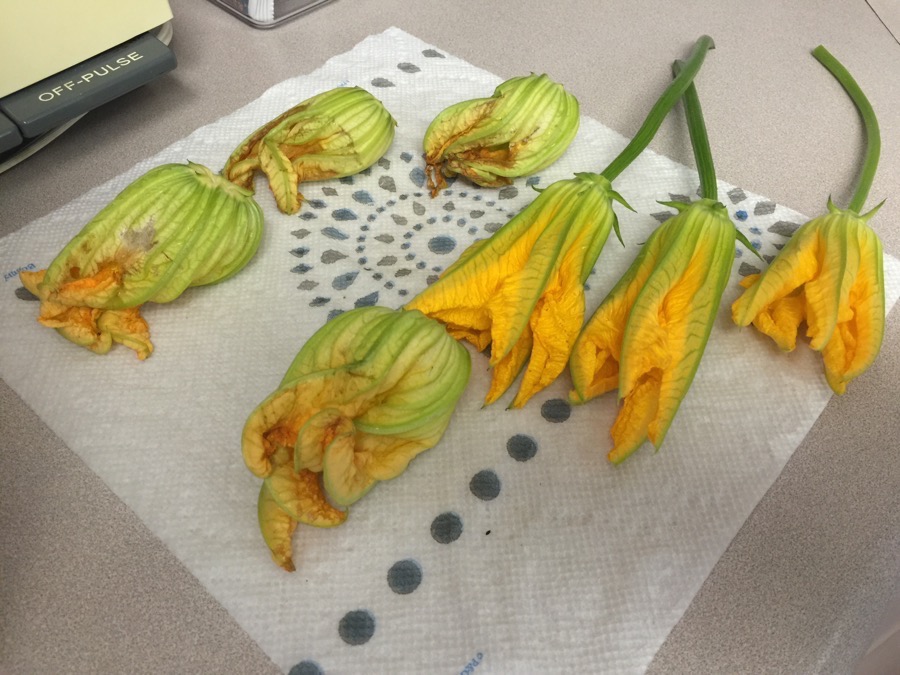
We picked them... Some were from yesterday old but they tasted fine
The "fat" ones were the girls... The skinny ones were the boys!
Did You Know? - The female flower is a golden blossom on the end of each emergent zucchini. The male flower grows directly on the stem of the zucchini plant in the leaf axils (where leaf petiole meets stem), on a long stalk, and is slightly smaller than the female. Both flowers are edible and are often used to dress a meal or to garnish the cooked fruit.

(White Bowl) Sue made the stuffing out of goat chese, cream cheese, and parmesan cheese with
an egg
adding fresh parsely from the garden
Beat two eggs so you can roll the stuffed blossom in it in order to have the
panki crumbs stick to the outside
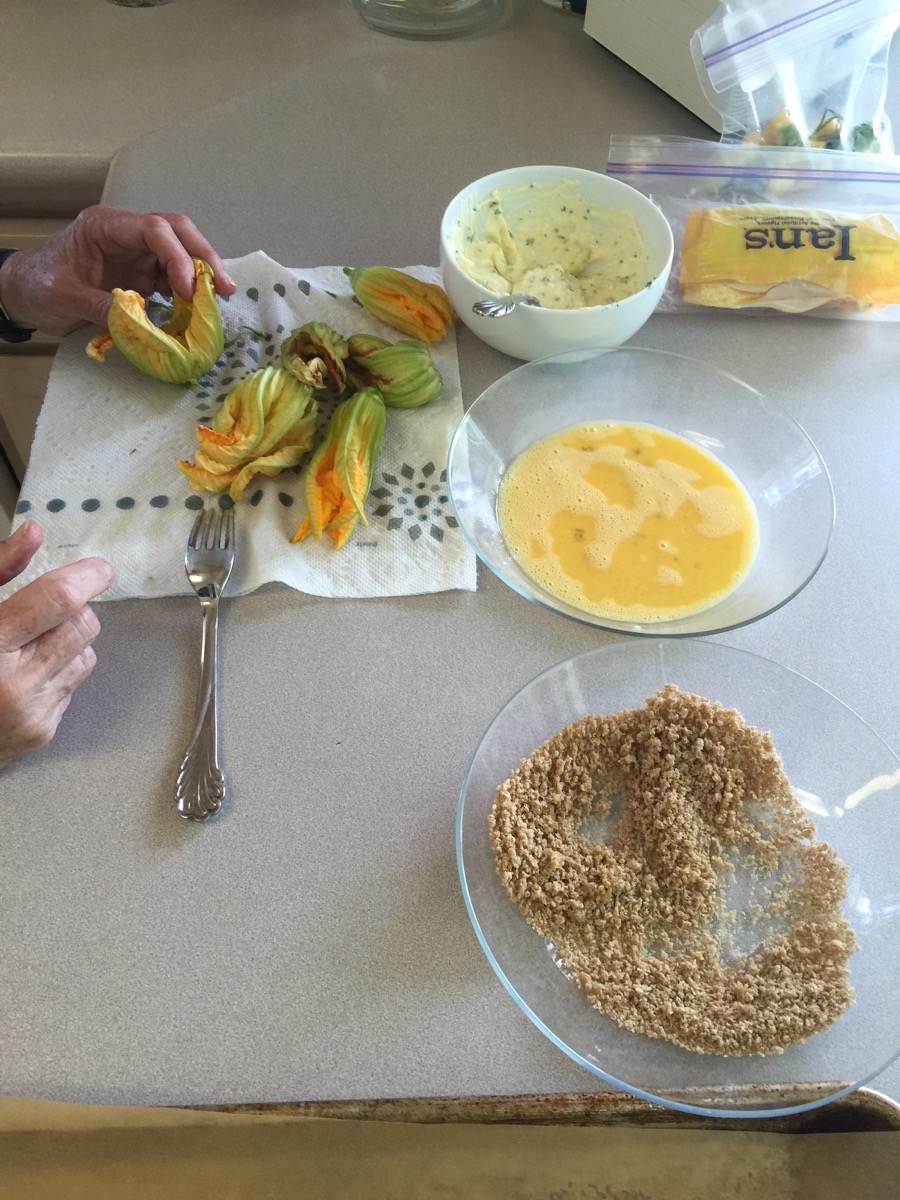
We both stuffed them... It takes three hands!
Open the blossom up and spoon in the filling
It can be done with one person but it is fun to hold hands
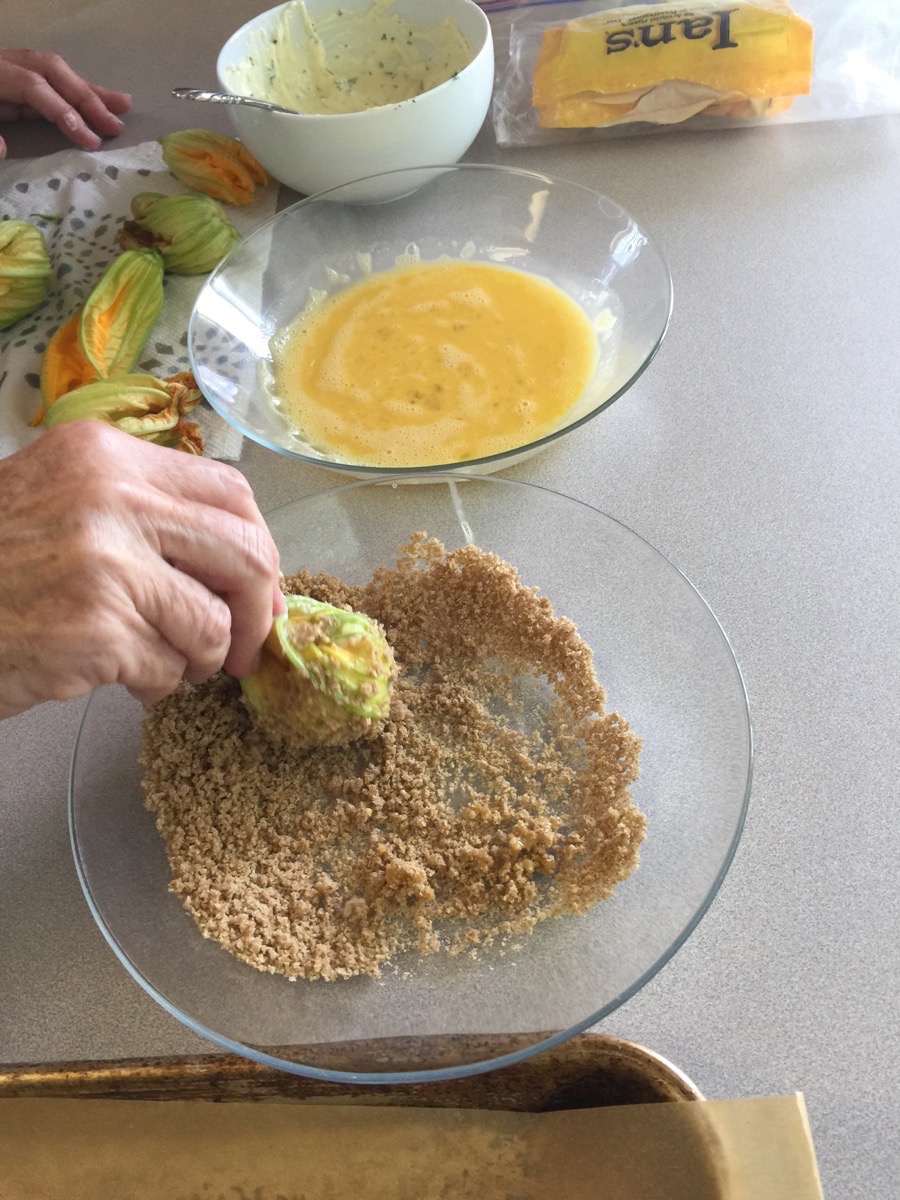
After being stuffed we rolled the squash blossom in the egg mix
and then rolled it in the wheat panko crumbs to cover
Did You Know? - Panko is a Japanese-style breadcrumb traditionally used as a coating for deep-fried foods such as tonkatsu. The biggest difference between panko and standard breadcrumbs is that panko is made from bread without crusts

A little messy but worth it
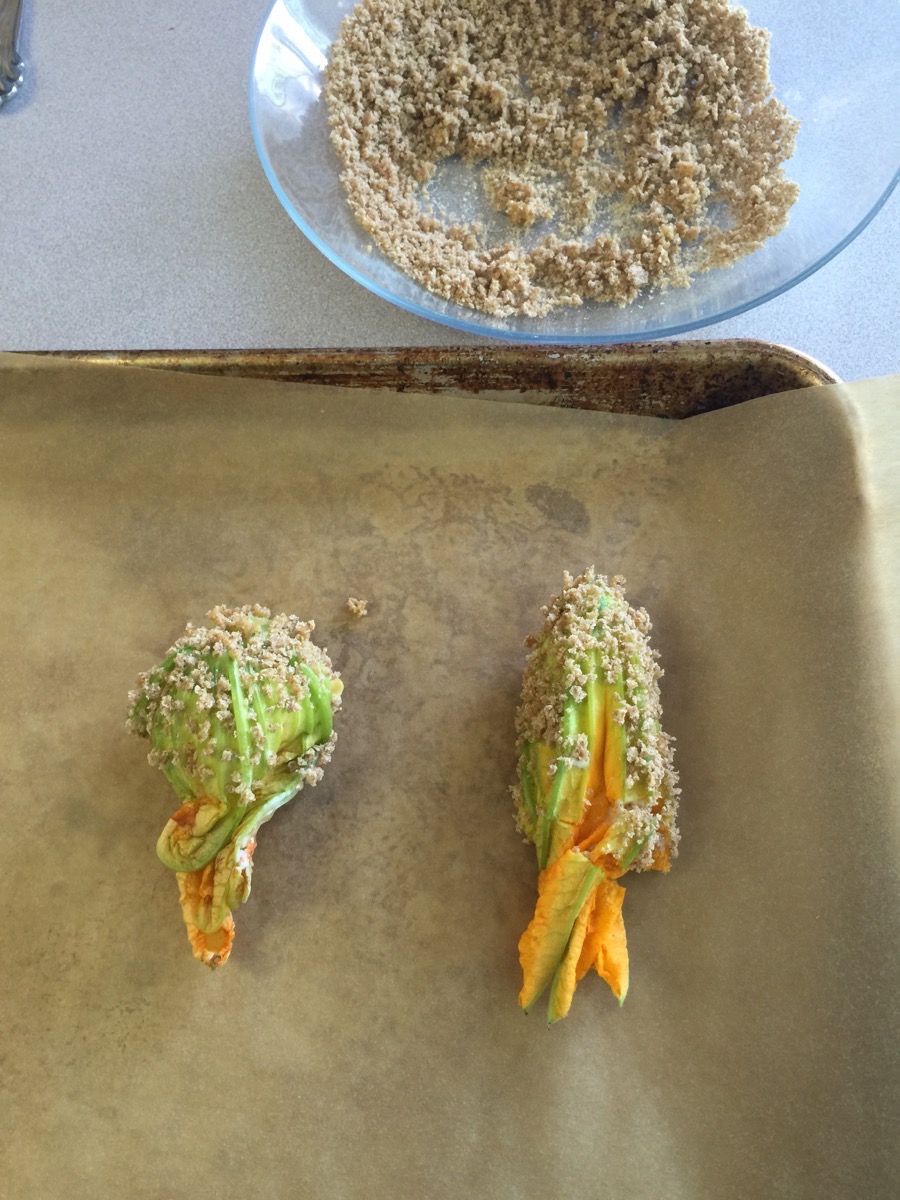
We laid them on parchment paper and into the over at 400 for 20 minutes
Did You Know? - Parchment paper and bakery release paper are cellulose-based papers that are used in baking as a disposable non-stick surface. Both are also called bakery paper or baking paper.

Looking good in the oven
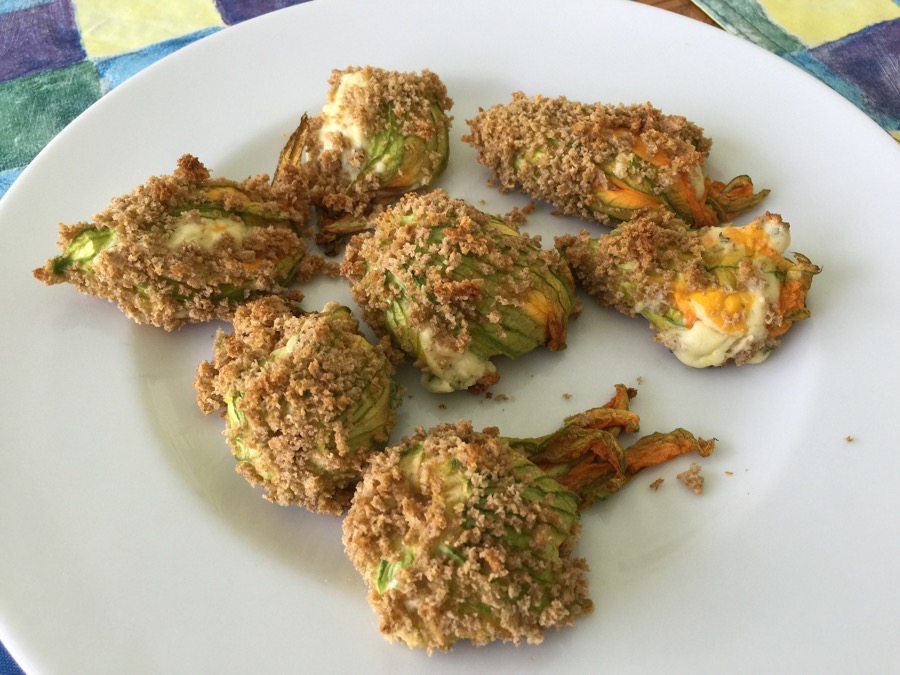
Served up and ready to go!

The panko crumbs were a great idea
We enjoyed a glass of wine, nice music, and our blossoms
NOTE: If you do not finish them all, wrap in aluminum foil and reheat the next morning
